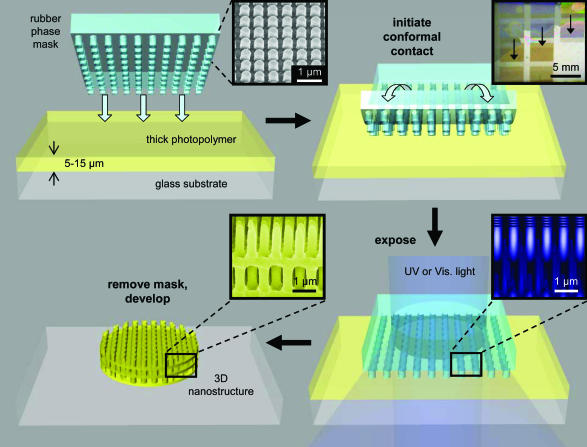Fig. 1.
Schematic illustration of steps for using a high-resolution conformable, elastomeric phase mask to produce 3D nanostructures. Placing such a mask (Upper Left) on the surface of a solid photopolymer film leads to intimate, conformal contact driven by van der Waals forces (Upper Right). (Upper Left Inset) SEM of the surface of a representative mask with relief features in the geometry of a square array of cylindrical posts with a diameter of 375 nm and a height of 420 nm. (Upper Right Inset) Top-view optical micrograph that shows the progression of a “wetting” front that establishes conformal contact between the mask and the underlying photopolymer. Shining light through the mask while it is in contact with the photopolymer film (Lower Right) generates a complex intensity distribution throughout the thickness of the film (Inset), when suitably coherent light is used. Interaction of the light with the polymer results in crosslinking reactions. Washing away the uncrosslinked polymer yields 3D nanostructures whose geometry is defined by the 3D interference pattern formed during exposure (Lower Left). (Lower Left Inset) SEM of a typical structure.

